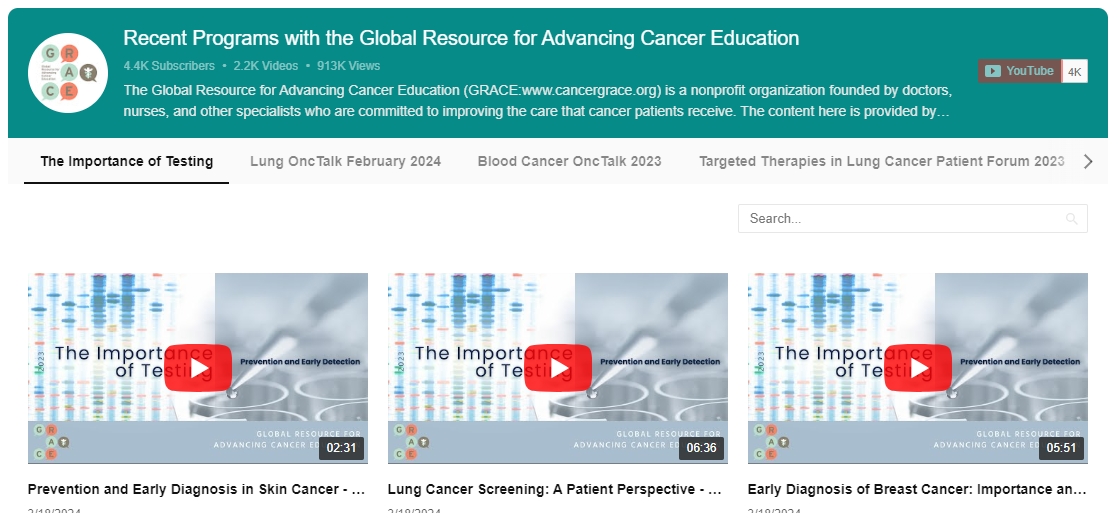Article and Video CATEGORIES
Please Note: New Treatments Have Emerged Since this Original Post
Introduction
Thank you to member Craig for asking some excellent questions in response to my Highlights of 2011 webinar. Thank you also to Dr. West, who emailed me to comment more on the idea of radiation for cells with acquired resistance.
We’ve spoken at length about EGFR and related mutations such as EML4/ALK and ROS1 on GRACE. For those who are not familiar with these subjects, I will refer you to my webinar for a summary on the most recent data on EGFR, EML4/ALK and ROS1:
https://cancergrace.org/post/2011-highlights-lung-cancer-dr-jared-weiss-part-1-egfr-axis
(Parenthetically, we did also cover CT screening and optimal management of elderly patients at https://cancergrace.org/post/dr-weisss-highlights-lung-cancer-2011-ct-screening-optimal-management-elderly-patients-advanced
In the Q&A for this webinar that covered some of the existing approaches to resistance, Dr. West pushed me and asked if there was one that was particularly promising. Well, I’ve spent a ton of time thinking about this problem and have written a trial to attempt to address it. I couldn’t resist the bait and mentioned my trial. In this post, I’d like to review the rationale for the approach that I described and address Craig (and Dr. West’s) question about how appropriate this approach will be to new mutations, such as EML4/ALK and ROS1.
The Approach:
 The basic idea is to take patient whose cancer has grown on tarceva, do cyberknife to the spots that have grown to eliminate the resistant clones, then continue using tarceva for the rest of the cancer that has shown evidence for ongoing sensitivity to tarceva.
The basic idea is to take patient whose cancer has grown on tarceva, do cyberknife to the spots that have grown to eliminate the resistant clones, then continue using tarceva for the rest of the cancer that has shown evidence for ongoing sensitivity to tarceva.
Progression of patients with EGFR mutation on tarceva
When cancer grows through chemotherapy, it often grows in multiple spots and generates new spots. In contrast, when EGFR-mutated lung cancer grows through tarceva, a good portion of the time it only grows in one or two spots. Recent breakthroughs have shown some of the mechanisms of this resistance. We’ve covered this on GRACE before and you can learn more about it from Dr. Lecia Sequist’s webinar.
The key point that I want to make is that progression is often limited. Often, most of the cancer cells remain sensitive to tarceva while one or two spots acquire some change (with “some change” partially defined in the figure above and in Dr. Sequists’s webinar). In theory, if you could eliminate those few spots of resistance, you can imagine that the remainder of the cancer in the body might be well controlled back on tarceva. That’s the core idea here.
Why Radiation for oligometastatic spread?
There’s actually a number of trials that have tried to cure patients with cancer spread to only a few sites (oligometastatic spread). This is a controversial subject that has been covered elsewhere on GRACE before; actually, this post by Dr. Pinder first got me thinking along the lines that ultimately led to proposing the trial.
Dr. Pinder showed data from the University of Rochester, where 49 patients with a total of 125 metastatic lesions were treated, for a crude local control (control at the spots radiation was given) of 94%.
I delved deeper into the literature on the subject and found a lung-cancer specific trial that treated patients with only 1 or two sites of metastatic spread (data from Kahn, Mehta and Zusag, Radiotherapy and Oncology 2006):
And I found others for other cancers. I don’t intend to generally address oligometastatic cancer in this post (it’s an interesting topic that I leave for another day). However, these studies, alongside others that I haven’t cited here, support the idea that it is feasible to do cyberknife to at least 5 sites, with low risks of complications and high rates of controlling cancer at those sites.
Finally, before moving on, I need to mention one other study that is relevant but whose results were not available to me when I was first thinking about this stuff (it was presented at an ASTRO meeting after I had already started drafting the concept). Investigators at the Universityof Coloradotreated 15 patients with < 6 sites of disease and progression on at least one chemo regimen with tarceva followed by stereotactic body radiotherapy (SBRT, the generic name for cyberknife) to all active disease sites 1-4 weeks after starting tarceva. Median survival for this small group of pre-treated patients exceeded 12 months.
Why Specifically for EGFR mutation?
The first and most practical reason was that at the time I was first thinking about this stuff, EGFR mutation was the only druggable molecular target with an FDA approved therapy. But the rationale for starting with EGFR goes deeper than that. First, there’s laboratory data indicating superior radiation sensitivity for EGFR mutated lung cancer cells compared to other lung cancer cells. This includes EGFR mutated cells that have acquired the T790 resistance mutation, the most common known mechanism:
But, I didn’t get truly jazzed about this trial concept until I saw human data at ASCO in 2010. Investigators at the Dana Farber Cancer Institute reviewed their outcomes after thoracic radiation between EGFR mutant and wild-type tumors in a retrospective cohort of patients with locally advanced NSCLC:
(Grey curve EGFR mutant, Black curve EGFR Wild-Type)
As you can see, these findings suggest that radiation may be a particularly effective treatment for patients with EGFR-mutated lung cancer.
What about other mutations?
The trial for 2nd line treatment of patients with EGFR mutation that I briefly described above will hopefully open at UNC on 4/18; it is funded by Astellas. Dr. West asked about extension of this idea to other genetic changes such as EML4/ALK and ROS1. I have also been thinking about this idea and think it sufficiently promising that I’ve brought the idea up with one of Pfizer’s smartest clinician scientists and have sent him the protocol for the EGFR-mutated trial to suggest doing something similar with crizotinib. However, there are a few important caveats. First, we don’t have a large bulk of experience with progression of patients with EML4/ALK or ROS1 on crizotinib to know if their progression is frequently limited to a few sites the way it often is with tarceva in EGFR mutation. Second, we know very little about the relative radiosensitivity of patients with these other genetic changes—do they render radiosensitivity like EGFR, radioresistance, or neither? Finally, a caveat to the last caveat—given the high rate of local success with cyberknife, does it matter? In other words, even if a particular mutation renders cells radioresistant, might cyberknife overcome it? Ultimately, we will need clinical trials to truly answer these questions and I promise to keep working hard.
Disclosures: I hope that my conflicts of interest here are already plainly stated--Astellas (one of the makers of tarceva) has funded my study for EGFR mutants and I am proposing a similar study to Pfizer (the maker of crizotinib).
Please feel free to offer comments and raise questions in our
discussion forums.
Forum Discussions
Waiting for my appointment with oncologist this morning. Thank you for the response. It helps. <3
It sounds like you’re thinking of this in a very appropriate way. Specifically, it sounds like the growth of the nodule is rather modest, though keep in mind that the change...
Hi and welcome to GRACE. I'm sorry your mom is having this difficulty. An indwelling catheter is used when the pleura space continually fills and the catheter is always there to...
Hi Oaktowngrrl, Welcome to Grace. I'm so sorry you're going through this.
Finding a reputable dedicated thoracic surgeon for lung surgery might be difficult, as it is a complex and...









Hi Blaze,
As much as I hate to say it, Welcome back Blaze. It sounds like you're otherwise feeling good and enjoying life which is a wonderful place to be. ...